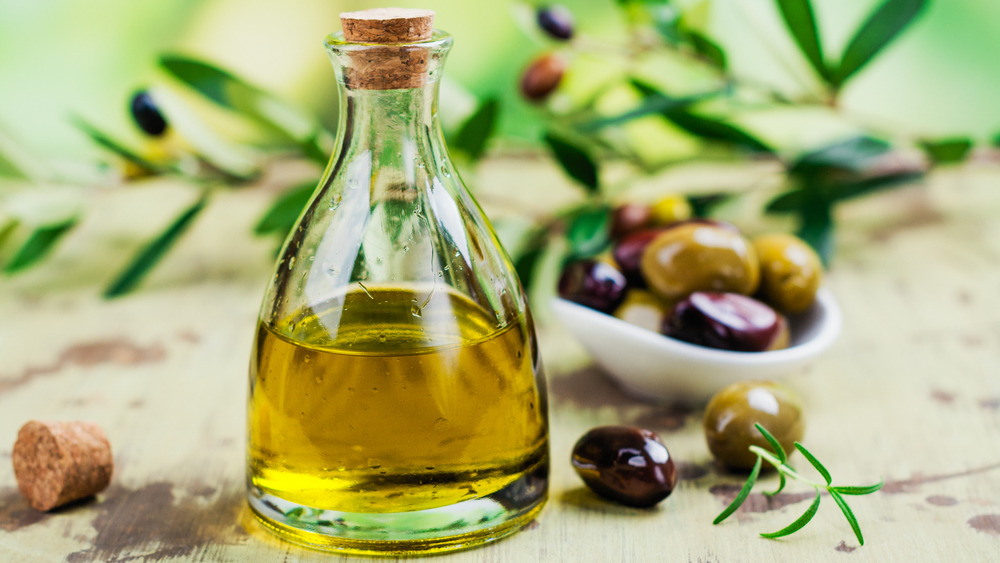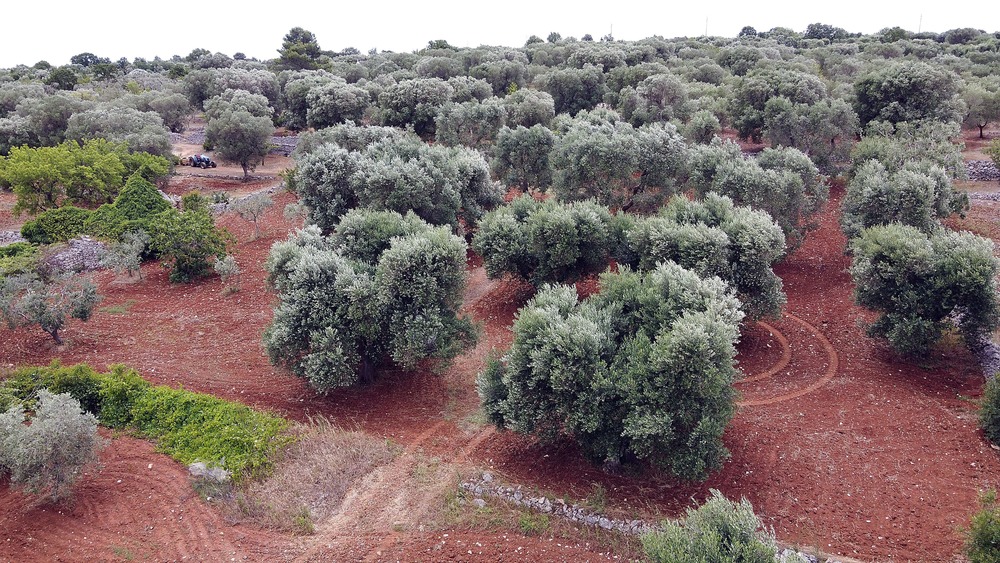We're Probably Going To Have An Olive Oil Shortage. Here's Why
Climate change is expected to have a powerful and detrimental impact on Central Italy and other parts of the world that bring us much of our olive oil supply, according to a 2020 report by the Euro-Mediterranean Center on Climate Change. Countries in the EU produce most of the world's olive oil, and Italy produces about 17 percent of the olive oil from the EU, second only to Spain, according to the Food and Agriculture Organization of the United Nations (FAO).
For centuries, the Mediterranean has represented ideal growing conditions for olive trees: Long and warm summers and winters that are cold, but do not dip below freezing. But climate shifts have made Italy's primary olive-growing region — central to southern inland areas, including Calabria and Puglia — less hospitable to olive production (via FAO). The Euro-Mediterranean report says the region can expect to experience less available water, and hotter, dryer, and more desert-like conditions if current climate trends remain unchanged.
However, it's not only Italy that is suffering from poor olive production and reduced olive oil production. According to Eater, olive growers around the world are hurting. In 2019, a cold spring and fall storms reduced French olive oil production; a heat wave in Greece last spring impacted the olive crop (via Olive Oil Times); and in Spain, snow storms in early 2021 destroyed olive trees in and around Madrid (via Olive Oil Times).
Mediterranean olive crops are in danger
According to Olive Oil Times, worldwide olive oil production reached a four-year low last year. Production went up in only a few nations, while places like Palestine, Israel, Turkey, and Italy experienced sharp declines.
Even in the United States, olive crops are under constant threat. Changes to California's climate in recent years have brought droughts and hampered growers' ability to irrigate their trees, says Eater. Additionally, wildfires pose a constant threat to olive-growing operations.
Although there are currently no olive oil shortages on the shelves of U.S. supermarkets, some of the olive oil you are buying from a Californian, French, or Italian label are increasingly be made with olives from unexpected locations. Poor crops have forced companies to source their olives from far-off places like Portugal, Argentina, and Chile.
This might continue to be the case if a 2014 paper on climate change and olive production is to be believed. It predicts that olive-friendly environments will continue to significantly decrease throughout the Italy, France, Greece, the Middle East, and the Iberian Peninsula.
The Euro-Mediterranean Center on Climate Change states that in places like Central and Southern Italy, if conditions do not change, olive production might be forced to more northern regions, to the detriment of Southern growers and landowners. It is a sad reality when you consider that for centuries, growing olives has been a tradition, often passed on through families, and an important provider of jobs in many communities.

